Scottish Vacant and Derelict Land Survey 2019
Data collection undertaken to establish the extent and state of vacant and derelict land in Scotland. The data is sourced from local authorities and the Loch Lomond and Trossachs National Park Authority.
This document is part of a collection
1. Key Findings
The total amount of reported derelict and urban vacant land in Scotland decreased by 164 hectares (1.5%) from 11,090 hectares in 2018 to 10,926 hectares in 2019.
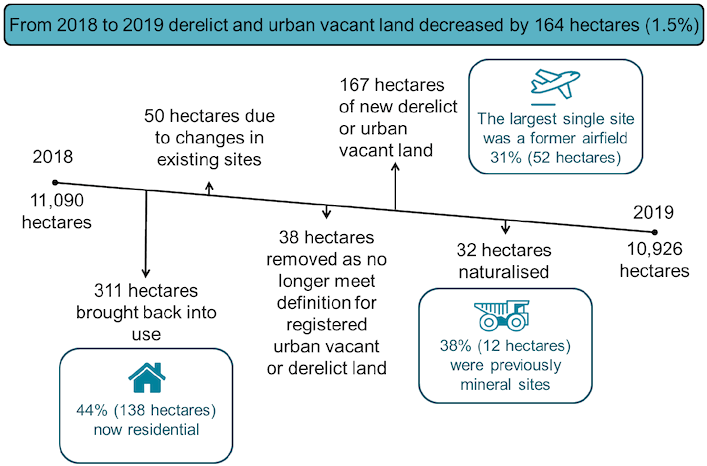
The net decrease of 164 hectares (1.5%) between 2018 and 2019 is the result of 311 hectares being brought back into use, 32 hectares recorded as naturalised, the addition of 167 hectares in new sites and a net increase of 12 hectares as a result of changes to existing sites and removal of sites that do not meet the required definitions.
Recorded Area of Derelict and Urban Vacant Land
Of the 10,926 hectares of derelict and urban vacant land recorded in the 2019 survey 2,060 hectares (19%) were classified as urban vacant and 8,866 hectares (81%) were classified as derelict.
There has been an annual decrease in the total recorded area of derelict and urban vacant land since 2014.
In 2014 2,217 hectares of derelict land were added to incorporate former surface coal mine sites in East Ayrshire which became derelict following the liquidation of Scottish Coal and ATH Resources in 2013.
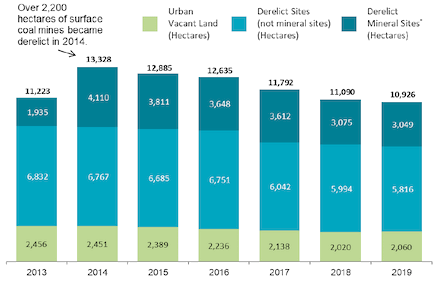
Four authorities have more than 1,000 hectares of derelict and urban vacant land, 52% of the total area across Scotland.
East Ayrshire has the largest area –
1,801 hectares, 16% of the Scotland total.
Glasgow City has the largest area of the City Authorities -
954 hectares, 9% of the Scotland Total.
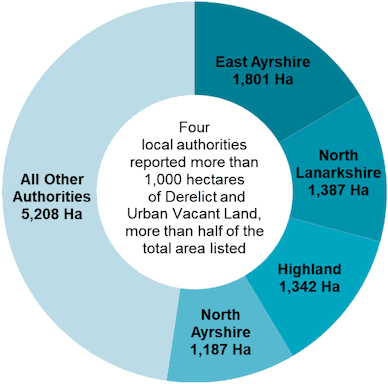
Previous uses of Derelict and Urban Vacant Land
For those sites where the previous use is known, 29% of derelict and urban vacant land had been previously used for mineral activity (3,067 Ha), 20% for manufacturing (2,132 Ha) and a further 13% for defence (1,340 Ha).
For urban vacant land, where previous use is known, manufacturing (15%, 277 Ha) and residential use (15%, 263 Ha) had the largest areas.
For derelict land the largest area with a known use was for mineral activity (35%, 3,049 Ha).
Of the 167 hectares of new derelict and urban vacant land reported in 2019, the largest area had previous land uses related to defence activity, 69 Ha, 44% of new land reported.
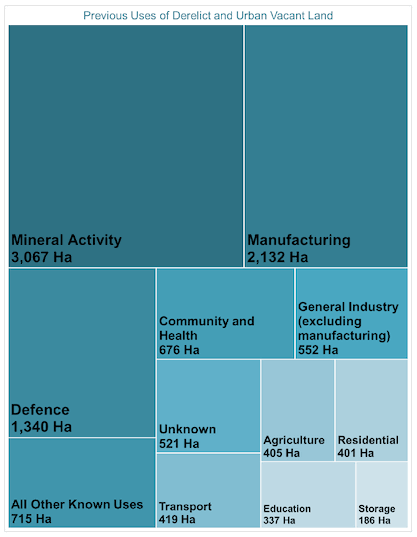
Development Potential
Just over 7,800 Ha of derelict and urban vacant land, where the development potential was known, was reported to be developable, 71% of total area.
24% of all reported derelict and urban vacant land was considered developable in the short term - development within five years.
20% of all reported derelict and urban vacant land was considered uneconomic to develop and/or is viewed as suitable to reclaim for a ‘soft’ end use (i.e. non-built use).
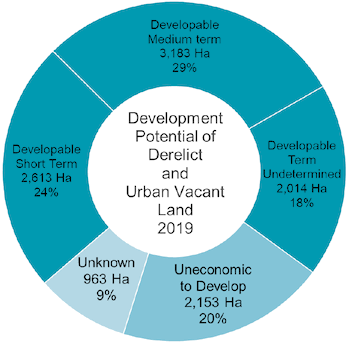
People’s Proximity to Derelict Land in 2019
Overall in Scotland 28% of the population were estimated to live within 500 metres of a derelict site, though there were differences across the country.
Shetland and Orkney had the lowest percentage, both less than 1%. North Lanarkshire had the highest with 75%.
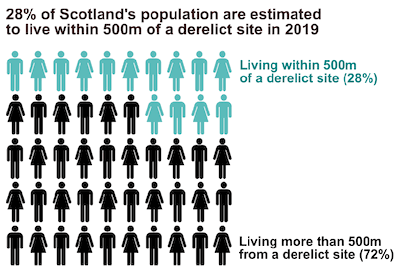
55% of people living in the most deprived decile in Scotland are estimated to live within 500 metres of derelict land, compared to 11% of people in the least deprived decile.
Based on 2018 mid-year population estimates and Scottish Index of Multiple Deprivation (SIMD) 2016.
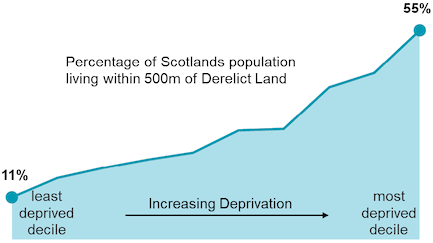
Area of Derelict and Urban Land reclaimed or brought back into use
311 hectares of land was reclaimed or brought back into use in 2019.
An additional 32 hectares were recorded as naturalised.
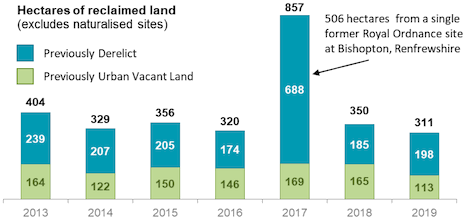
Uses and funding of land reclaimed or brought back into use1
More sites were reclaimed or brought back into use for residential purposes than any other use, 128 of the 250 reused sites, covering 138 of the 311 hectares brought back into use.
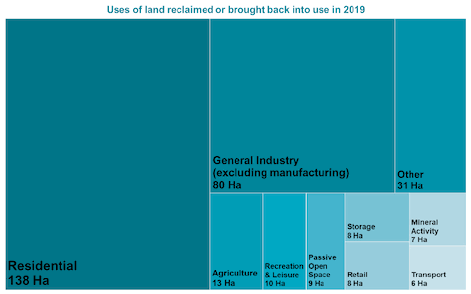
Almost a third of the 311 hectares of Derelict and Urban Vacant Land brought back into use in 20191 (102 hectares) were listed as solely private sector funded.
75 hectares, 24% of the 311 hectares of Derelict and Urban Vacant Land brought back into use in 20191 involved some form of public funding, either a full or partial contribution.
1 Excludes naturalised sites and sites that have been removed as they no longer meet the required definitions for derelict or urban vacant land.
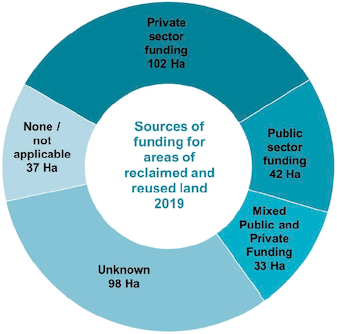
Since its inception in 2005/06, the Scottish Government’s Vacant and Derelict Land Fund has contributed (either fully or partially) to the reuse of 406 hectares (in total) of previously derelict and urban vacant land across Dundee City, Fife, Glasgow City, Highland, North Ayrshire, North Lanarkshire and South Lanarkshire.
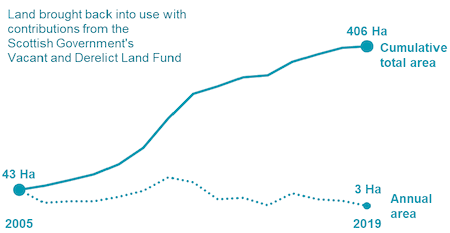
Contact
Email: planstats@gov.scot
There is a problem
Thanks for your feedback